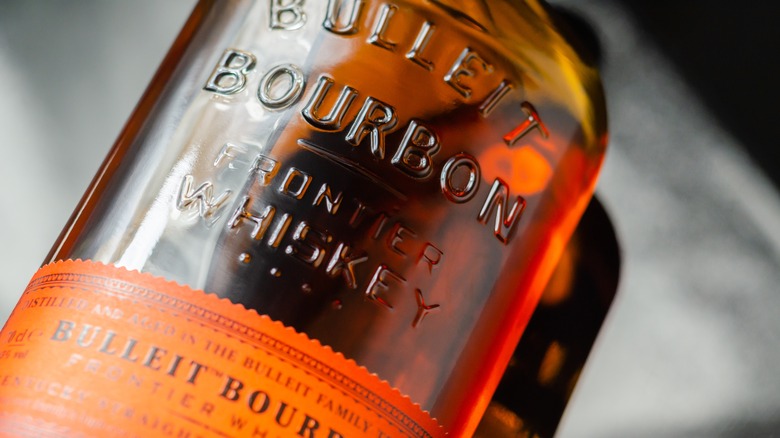Bulleit Bourbon Gets Its Bold Flavor From A Whole Lot Of Rye
Congress labeled bourbon as America's native spirit in 1964, and the American-made alcohol has set laws defining how the booze should be made and what it should contain. For whiskey to classify as bourbon, it must be made from mash made up of at least 51% corn and aged in charred new oak barrels. Beyond that, distilleries have their say in the other components of the spirits they produce and distribute, as long as the finished product is free of additives and bottled at a minimum of 40% ABV.
With 51% of the mash made up of corn, the rest of the ingredients needed to make bourbon can be assembled from grains like barley, wheat, or rye. The exact ratios that a distillery chooses will ultimately influence the taste and finish of the final product. Bourbons like Van Winkle and Weller use wheat, resulting in a smoother, softer bourbon that carries sweeter tasting of caramel and vanilla. And then there are bourbons like Bulleit that ramp up the rye.
A distinctive finish
More rye in mash bill means a spicy, almost peppery finish when compared to other kinds of bourbons. In the case of Bulleit, rye makes up 28% of the mash bill, and the resulting bourbon is bold with spicier tasting notes of oak and vanilla. Because of the presence of the rye in the mash, Bulleit bourbon offers a long finish that leaves a taste of toffee in the mouth. The golden-colored spirit is a complete experience: A spicy first sip leading to a smooth mid-palate and a soft-as-satin finish.
To cultivate your taste for bourbon and the ability to recognize some of the differences in bourbons as a result of the distilleries' selected mash, the bourbon tasting wheel can help drinkers identify tasting notes and detect subtle nuances in flavor. Once your bourbon palette is developed, you'll know exactly which bottle to reach for the next time you're assigned alcohol-buying duty.

